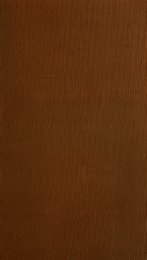Catalog of the Benthic Marine Algae of the ... - SeaweedAfrica
Catalog of the Benthic Marine Algae of the ... - SeaweedAfrica
Catalog of the Benthic Marine Algae of the ... - SeaweedAfrica
Create successful ePaper yourself
Turn your PDF publications into a flip-book with our unique Google optimized e-Paper software.
nomen novum serves as <strong>the</strong> basionym (unless it too is a later<br />
homonym). Gracilaria lichenoides, for example, is usually<br />
attributed to (Turner) Greville, but Fucus lichenoides<br />
Turner, <strong>the</strong> intended basionym, is a later homonym, and<br />
hence not priorable. The first generic placement outside<br />
Fucus was to Gigartina by Lamouroux. Gigartina lichenoides<br />
Lamouroux thus is treated as a nomen novum and serves<br />
as <strong>the</strong> basionym <strong>of</strong> Sphaerococcus lichenoides and Gracilaria<br />
lichenoides.<br />
Geographic distribution is indicated primarily by island<br />
or island group (Figure 1), secondarily by province within<br />
<strong>the</strong> island or island group (Figure 2). The islands or island<br />
groups are listed in four successive northwest-sou<strong>the</strong>ast<br />
sweeps, thus: BATANES, LUZON, CATANDUANES; MINDORO,<br />
MARINDUQUE, ROMBLON, MASBATE, SAMAR, LEYTE; PANAY,<br />
GUIMARAS, NEGROS, CEBU, SIQUIJOR, BOHOL, CAMIGUIN, MIN<br />
DANAO, BASILAN; PALAWAN, SULU. Within Luzon, <strong>the</strong> provinces<br />
are listed from north to south, first on <strong>the</strong> west coast<br />
(from Cagayan to Batangas), <strong>the</strong>n on <strong>the</strong> east coast (from<br />
Isabela to Sorsogon). When appropriate, certain minor islands<br />
(arbitrarily limited to those labeled on United States<br />
Hydrographic Office Chart 14,200) are indicated paren<strong>the</strong>tically<br />
within provinces.<br />
SMITHSONIAN CONTRIBUTIONS TO THE MARINE SCIENCES<br />
Cordero (1977a) has classified <strong>the</strong> Philippine Archipelago<br />
into four marine floristic regions, namely, <strong>the</strong> South China<br />
Sea region (Batanes, northwestern Luzon, and Mindoro),<br />
<strong>the</strong> Pacific Ocean region (nor<strong>the</strong>astern Luzon, Marinduque,<br />
and Romblon), <strong>the</strong> Sulu Sea-Celebes Sea region (Palawan,<br />
Sulu Archipelago, Basilan, and <strong>the</strong> sou<strong>the</strong>rn tip <strong>of</strong> Zamboanga<br />
del Sur), and <strong>the</strong> inland water region (all Visayan<br />
provinces and most <strong>of</strong> Mindanao). While we appreciate this<br />
attempt to bring phytogeographical order to <strong>the</strong> physiographic<br />
chaos presented by <strong>the</strong> 7,100 islands <strong>of</strong> <strong>the</strong> Philippine<br />
Archipelago, we believe that <strong>the</strong> purposes <strong>of</strong> this<br />
catalog are better served by an essentially linear sequence<br />
<strong>of</strong> localities. This sequence obviates <strong>the</strong> complication <strong>of</strong><br />
listing Luzon in three regions and Mindanao in two regions.<br />
(In fact, <strong>the</strong> east coast <strong>of</strong> Mindanao, not specified by Cordero,<br />
should be included in <strong>the</strong> Pacific Ocean region, giving<br />
a total <strong>of</strong> three regions for that island.) It also avoids <strong>the</strong><br />
arbitrary placement <strong>of</strong> Cagayan Province in <strong>the</strong> Pacific<br />
Ocean region. (The Babuyan Islands, which are politically<br />
part <strong>of</strong> Cagayan Province, are influenced equally by <strong>the</strong><br />
South China Sea and <strong>the</strong> Pacific Ocean, as are <strong>the</strong> Batan<br />
Islands, which Cordero places in <strong>the</strong> South China Sea region.)












